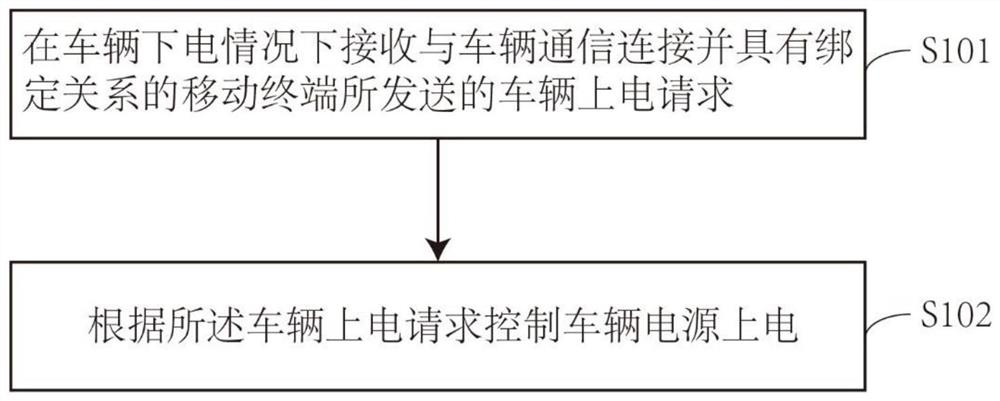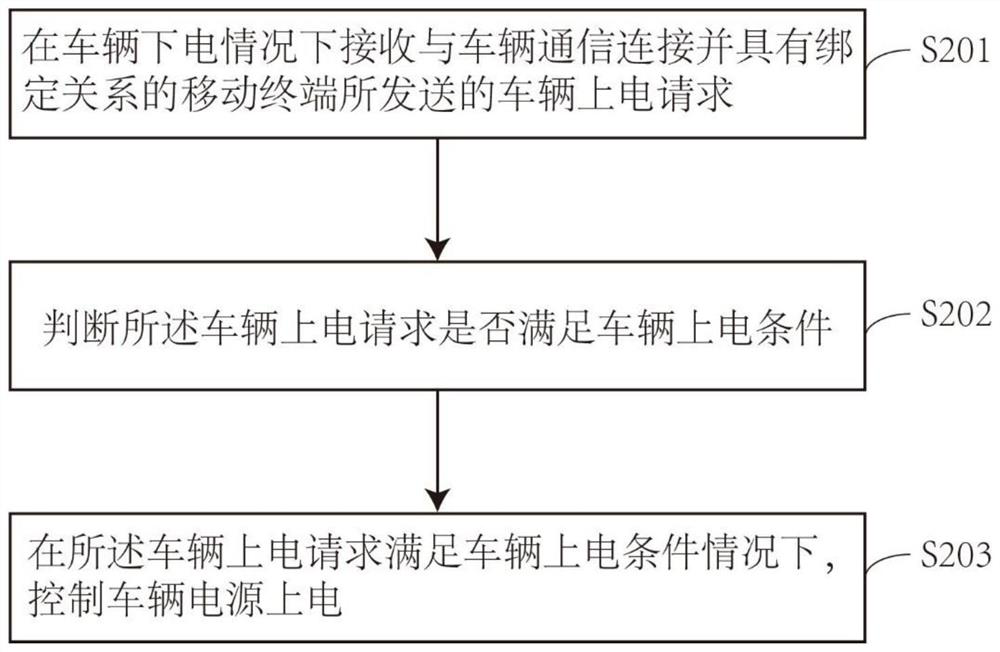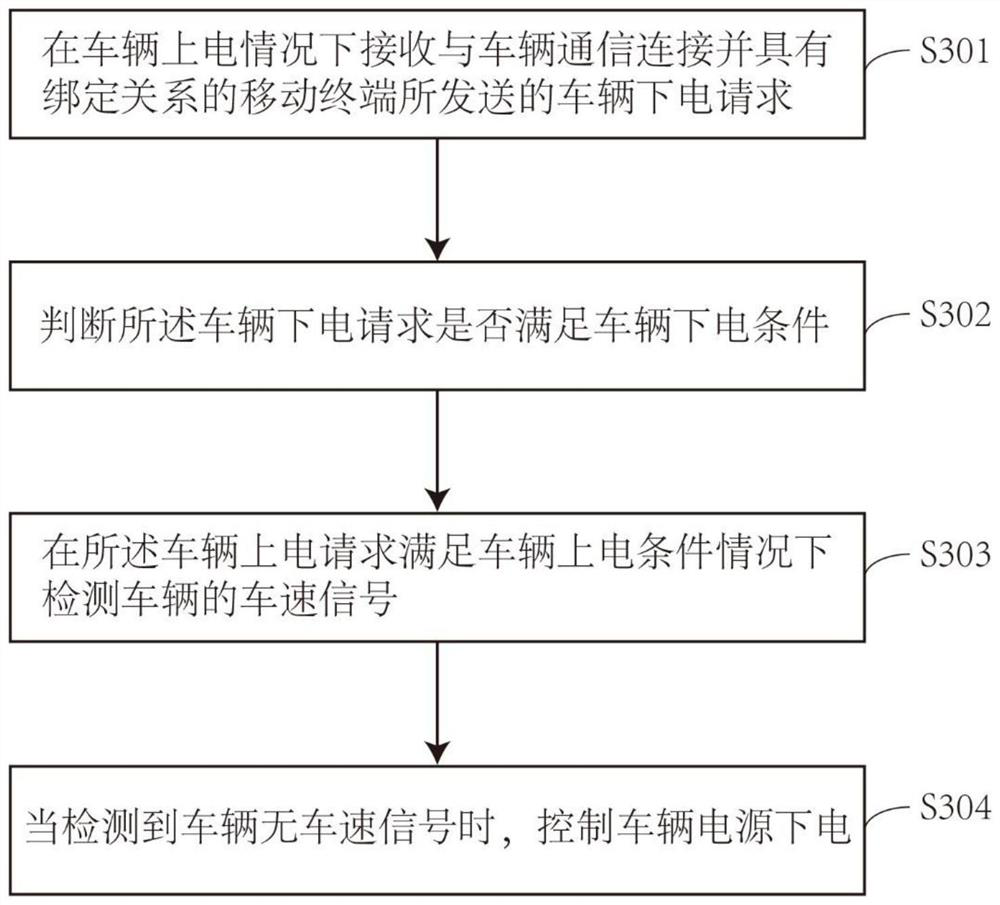Vehicle power-on and power-off control method, device and system and all-terrain vehicle
It is an electric control and vehicle technology, which is applied in the direction of vehicle components, transportation and packaging, circuits or fluid pipelines, etc. It can solve the problems of single form, affecting the management and use of cars by users, and no emergency treatment plan for mechanical keys, so as to achieve the goal of expanding Management methods, the effect of improving management and user experience
- Summary
- Abstract
- Description
- Claims
- Application Information
AI Technical Summary
Problems solved by technology
Method used
Image
Examples
Embodiment 1
[0059] Please refer to figure 1 , which is a flow chart of a method for controlling power on and off of a vehicle provided in the first embodiment of the present invention, the method includes:
[0060] Step S101, when the vehicle is powered off, receiving a vehicle power-on request sent by a mobile terminal that is communicatively connected to the vehicle and has a binding relationship;
[0061] Step S102, controlling the power supply of the vehicle to be powered on according to the vehicle power-on request.
[0062] Here, the vehicle includes, but is not limited to, two-wheeled motorcycles, three-wheeled motorcycles or four-wheeled motorcycles, snowmobiles, all-terrain vehicles and other vehicles. The power-on state of the vehicle refers to the state in which the vehicle power supply can supply power to the outside. At this time, the vehicle can perform operations such as starting and ignition. The power-off state of the vehicle refers to the state that the vehicle power supp...
Embodiment 2
[0068] Please refer to figure 2 , which is a flow chart of a method for controlling power on and off of a vehicle provided in the second embodiment of the present invention, the method includes:
[0069] Step S201, when the vehicle is powered off, receiving a vehicle power-on request sent by a mobile terminal that is communicatively connected to the vehicle and has a binding relationship;
[0070] Step S202, judging whether the vehicle power-on request satisfies the vehicle power-on condition;
[0071] Step S203, when the vehicle power-on request satisfies the vehicle power-on condition, control the vehicle power supply to be powered on.
[0072] This embodiment is based on the first embodiment, and the step S201 is the same as the step S101 in the first embodiment above, and will not be described in detail here, and reference may be made to the description of the first embodiment above. Step S102 in the above first embodiment specifically includes: step S202, judging wheth...
Embodiment 3
[0083] Please refer to image 3 , is a method flow chart of a method for controlling power on and off of a vehicle provided in the third embodiment of the present invention. This embodiment is based on the second embodiment, and the method further includes:
[0084] Step S301, when the vehicle is powered on, receiving a vehicle power-off request sent by a mobile terminal that is communicatively connected to the vehicle and has a binding relationship;
[0085] Step S302, judging whether the vehicle power-off request satisfies the vehicle power-off condition;
[0086] Step S303, when the vehicle power-off request satisfies the vehicle power-off condition, detecting the vehicle speed signal of the vehicle;
[0087] Step S304, when it is detected that the vehicle has no speed signal, control the power supply of the vehicle to be powered off.
[0088] In step S301, when the vehicle needs to be powered off after use, the vehicle is still in the power-on state at this time, and the...
PUM
 Login to View More
Login to View More Abstract
Description
Claims
Application Information
 Login to View More
Login to View More - R&D
- Intellectual Property
- Life Sciences
- Materials
- Tech Scout
- Unparalleled Data Quality
- Higher Quality Content
- 60% Fewer Hallucinations
Browse by: Latest US Patents, China's latest patents, Technical Efficacy Thesaurus, Application Domain, Technology Topic, Popular Technical Reports.
© 2025 PatSnap. All rights reserved.Legal|Privacy policy|Modern Slavery Act Transparency Statement|Sitemap|About US| Contact US: help@patsnap.com



